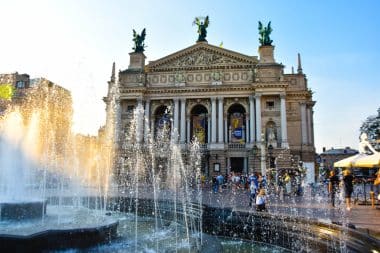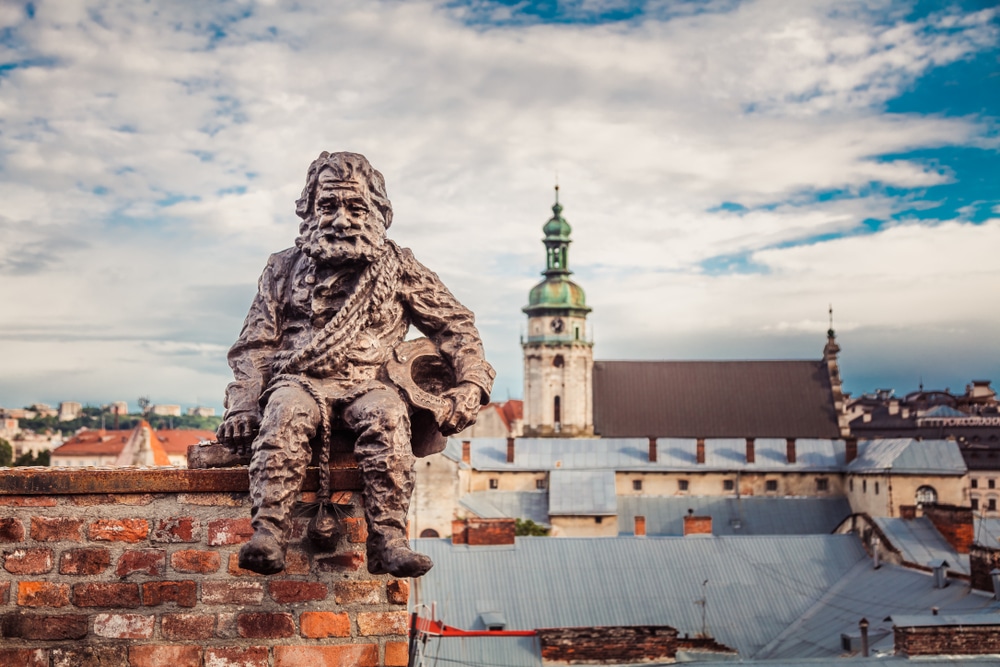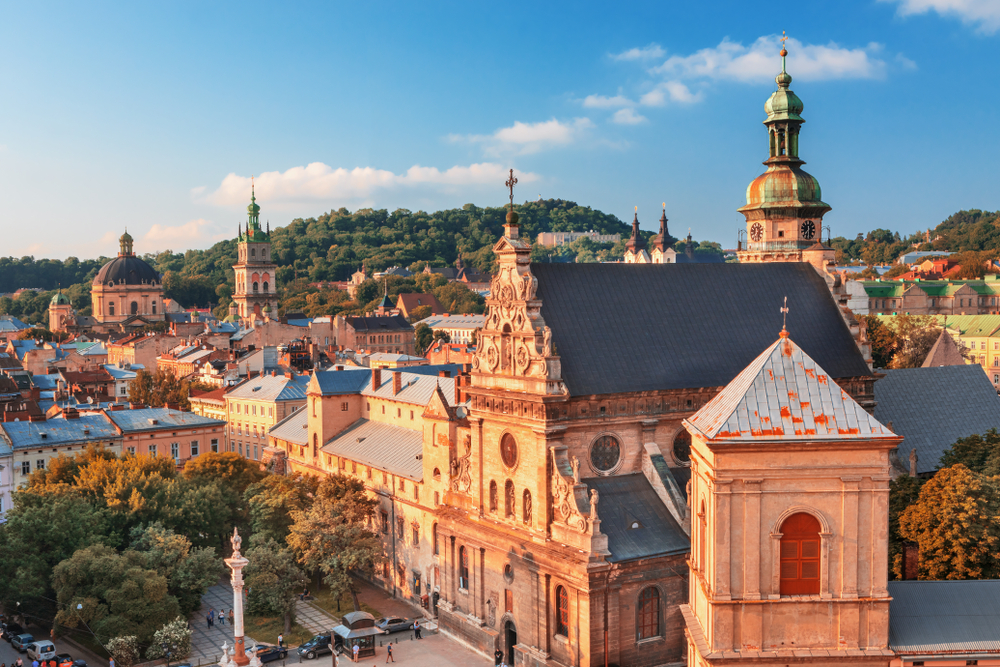When looking for interesting short holiday destinations, the choice does not always have to fall on large Western European metropolises such as Paris or Barcelona . Rather, rather unknown or forgotten cities can also have a very special charm away from mass tourism. One such city is Lviv in Ukraine.
Lviv is located in the west of Ukraine and from here about 90 kilometers from the Polish border. The city has around 730,000 inhabitants and consists of a total of six administrative units, the so-called city districts. Lviv is also located directly on the main European watershed, which separates the inlets to the Atlantic, the North Sea and the Baltic Sea from the inlets to the Black Sea and the Mediterranean.
The special tourist attraction of the city is not least due to the fact that different ethnicities and religions – including above all Poles, Ukrainians and Jews – lived together here for many centuries. As a result, many different cultural-political influences reached Lviv, which still shape the cityscape and the mentality of the people living there today.
History and politics

The history of Lviv can be traced back to the 5th century on the basis of the oldest traces of settlement found so far. However, the documented history of the city does not begin until the 13th century. In 1256, for example, the ruler of the time, Daniel of Galicia, had a castle built on a hill above today’s city centre. Since then, Daniel of Galicia has been considered the father of the city, which is made clear, among other things, by the fact that one of the many universities and the city’s own airport were named after him.
In the following centuries, Lviv was also in the field of tension of various territorial struggles due to its geopolitical location. In the 14th century, the city first fell to the Poles, then to Austria in 1772. After the end of World War I, Lviv was the capital of the Western Ukrainian People’s Republic for a short time before it fell back to Poland . After all, Lviv belonged to the Soviet Union before the end of World War II, with the result that a large part of the Polish population was expelled from the city.
Since 1991, Lviv has been part of the independent Republic of Ukraine, although Ukrainian nationalist tendencies are very pronounced in the city. For example, the right-wing radical party Svoboda was founded here, which has held the most seats in the city and regional parliament since the elections in 2010.
Sights in Lviv
In addition to the various cultural and religious influences, Lviv can also attract streams of visitors with an old town shaped by many eras. Thus, the city was affected by the destruction of the 1. and 2nd World War and therefore still has an almost completely preserved town centre with buildings from the Baroque, Renaissance, Classicism as well as Art Nouveau and Historicism. The historic center of the city was also added to the UNESCO World Heritage List in 1998.

Among the most important sights is a large number of sacred buildings, including the Latin Cathedral of the Assumption of the Virgin Mary, which was built between 1360 and 1481. In addition, the City Hall, the National Opera, the Ballet Theatre and the wall of the destroyed synagogue ‘Golden Rose’ are important sights in Lviv that should definitely be visited when visiting the city.
Activities and activities
In addition to exploring the historic old town with its architectural witnesses of past eras, Lviv is also known for its numerous museums, theaters, libraries and, above all, the National Opera. A visit to the theatre or opera is a must-see for tourists here.
But museums such as the open-air museum of folk architecture and rural life in Shevchenko Grove, the Lviv Beer Museum, are also worth a visit. For those interested in art, a visit to the Lviv Picture Gallery is also a good idea. Other places to visit in Lviv include the 16th-century Kornjakt Palace, where you can walk in royal apartments, and the three-storey Potocki Palace.
After all, the largest book fair in Ukraine takes place in Lviv every year, and the Alfa Jazz Fest is a great place for music lovers.
Curiosities and trivials
In Lviv, you can not only follow in the footsteps of bygone days, but also discover some curiosities. For example, there is a beer belly monument here, which probably goes back to Lviv beer as the oldest in Ukraine. Right next to it is a sculpture of a woman holding a crown in her hand – if you want to ‘put on’ the crown for a photo motif, you have to touch the sculpture’s chest.
In addition, there is a museum in honor of the writer Leopold von Sacher-Masoch – after whom masochism was named. In front of it stands a statue of this gentleman, in whose trouser pockets you can feel his best piece.
In addition to these curious monuments, Lviv also convinces with a variety of cat cafes. But you can also dine in a completely different way in a bunker-like restaurant on Rynok Square. Thus, Lviv has something to offer for each of its visitors – architecture, history, culture, as well as unusual monuments for extraordinary photo opportunities.


